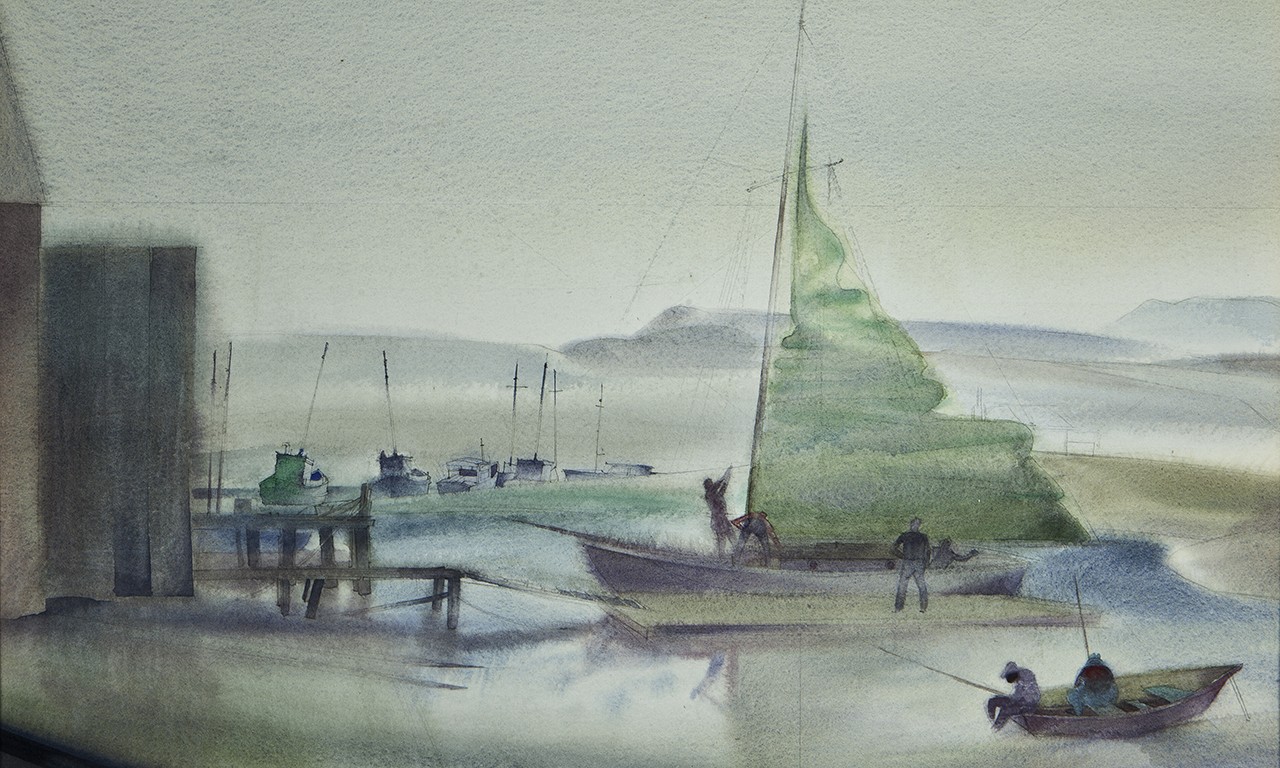 |
Morning Mist, mid 20th Century
James Patrick (American, 1911 - 1944); California
Watercolor on paper; 14 × 17 1/2 in.
2018.6.21
Ann and Bill Cullen Memorial Collection |
Gloom Havens
All those early morning commuters in the central Orange County area will know just how foggy it has been in recent days. While individuals may be split on whether being swaddled by water droplets is worth the reduced visibility, this phenomenon is a common enough occurrence around the world that fog, and the other members of its sight-reducing family: “mist” and the slightly more ambiguous “haze,” regularly appear in art from a variety of places. In this post we look at a selection of photographs, paintings, and prints from the Bowers collections which depict fog.
 |
Fishing at Newport Beach, 1888
J.R. Moeller; Santa Ana, California
Photographic print; 5 x 8 1/2 in.
7022.8A
Terry E. Stephenson Collection |
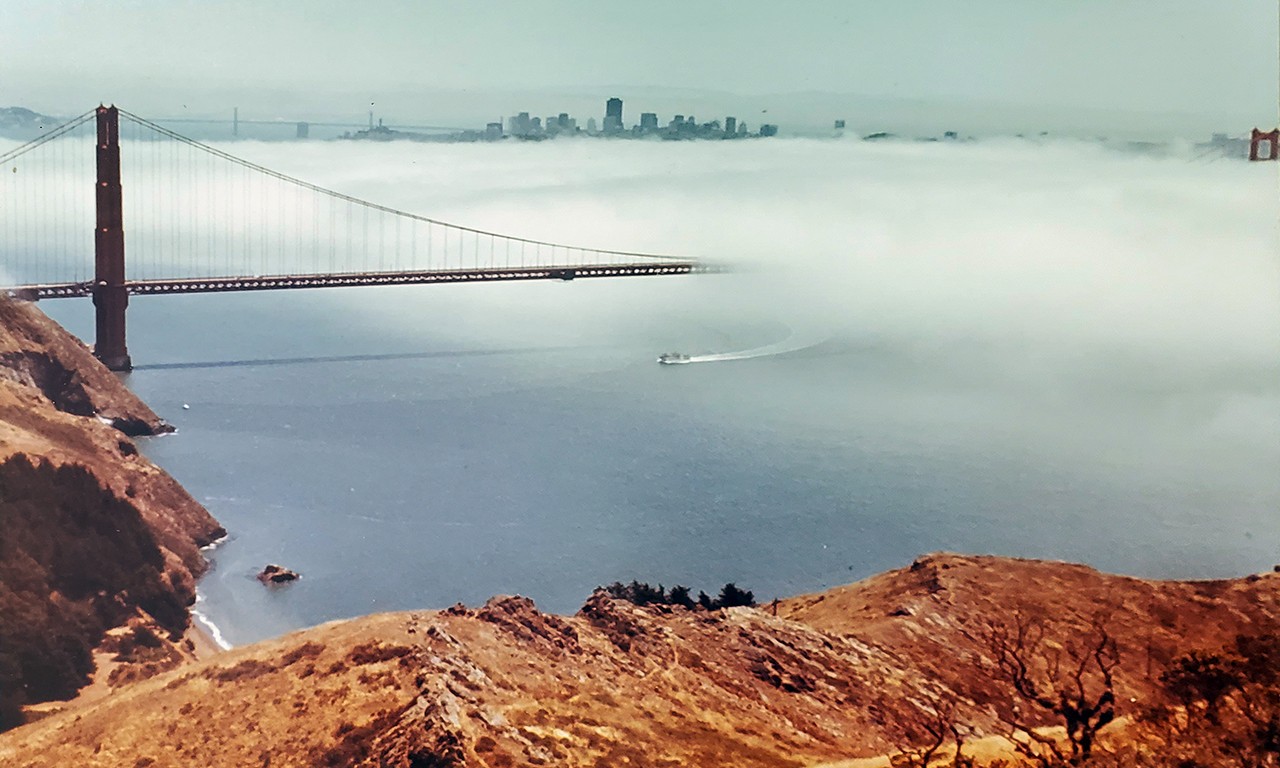 |
The Golden Gate and San Francisco, 1971
Roger K. Armstrong (American, 1913-1983); San Francisco, California
Photographic print; 11 1/2 x 14 1/2 in.
F80.5.9
Gift of the Artist |
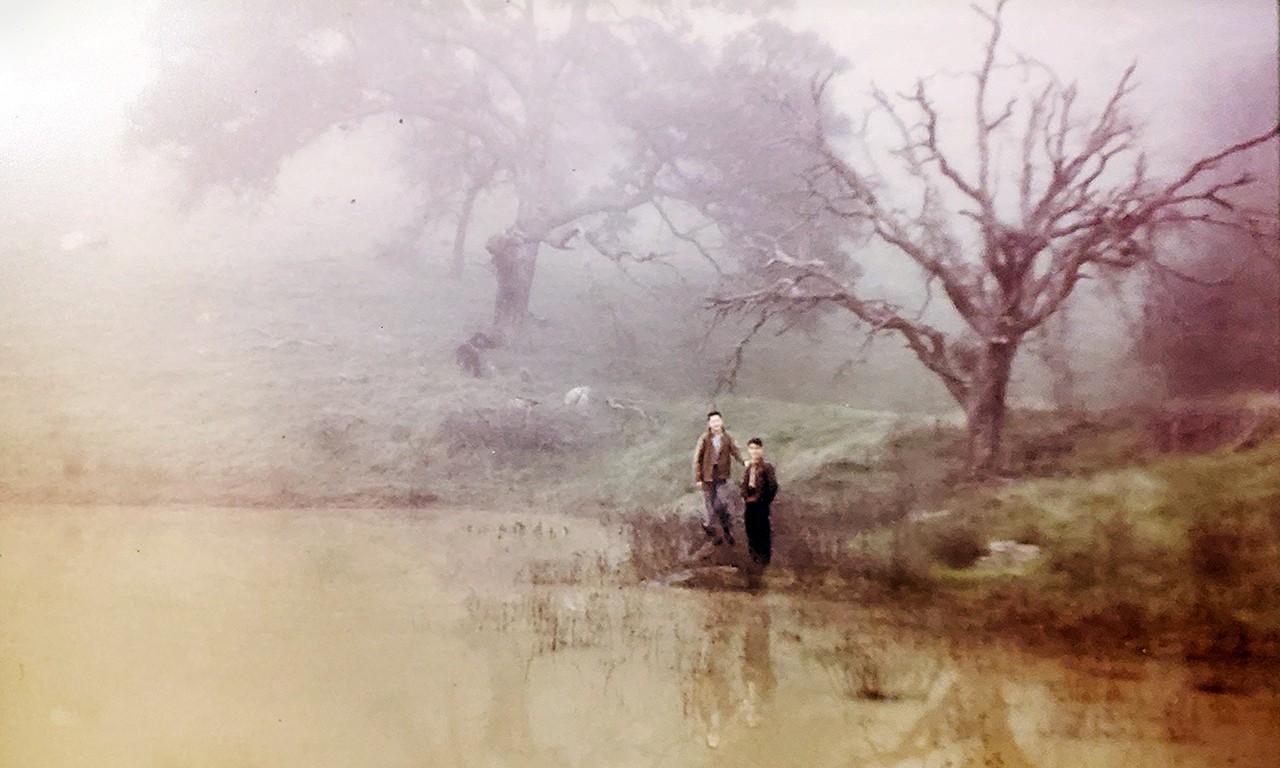 |
Dennis and Twain, 1957
Roger K. Armstrong (American, 1913-1983); Pittsburg, California
Photographic print; 11 1/2 x 14 1/2 in.
F80.5.2
Gift of the Artist |
Fog Cities
The science behind fog is more complicated than there are words for in this post, but plainly said the ethereal substance forms when water vapor condenses around airborne particles like dust. Three of the most common forms are radiation fog, which forms at night and burns off in the morning; advection fog, which comes from warm air passing over a cooler surface like the ocean; and valley fog, which happens when dense air is trapped by valley walls. All three of these are depicted in the objects in this post. Of course, the most true-to-life depictions of fog come from photographs. A snapshot of fishermen plying their trade or hobby as Newport Beach’s McFadden Wharf was being constructed shows the ocean disappearing into a blank void. Two photographs taken almost a century later as part of Roger K. Armstrong’s Kaleidoscope Kalifornia series show Fog City’s Golden Gate Bridge blanketed by its namesake and two mysterious figures on the bank of a pond in the nearby city of Pittsburg, California.
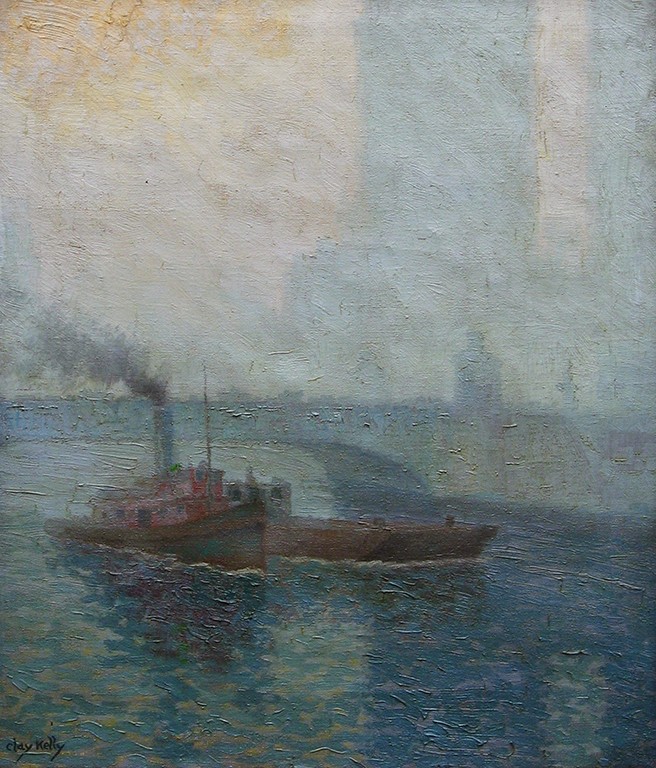 |
Chicago River, early 20th Century
Clay Kelly (American, 1874-?); Chicago, Illinois
Oil on canvas; 24 x 20 in.
33881
Gift of Mrs. Clay Kelly |
Misty Eyed Painters
For more increasingly abstracted representations of fog, one need look no further than paintings by American artists. Given that condensation requires solid particles for water droplets to form around, the pollution of big American cities around the turn of the 20th century turned them into factories for hazy air. Clay Kelly, whose artworks and odd disappearance in 1937 has been previously discussed on the Bowers Blog, spent a great deal of time painting Chicago. This painting of the Chicago River with a bridge and skyscrapers disappearing into an early winter firmament is reminiscent of the glaucomic backgrounds one might find in a maritime scene by William Turner. On the other hand, the wet-on-wet application seen in James Patrick’s Morning Mist—the banner image for this post—ensures that the forms of boats and men in his foreground are as ambiguous as the low hanging mist which enshrouds them. An example of the California watercolor style, Patrick’s painting is currently on display in Artistic Legacy: The Ann and Bill Cullen Collection.
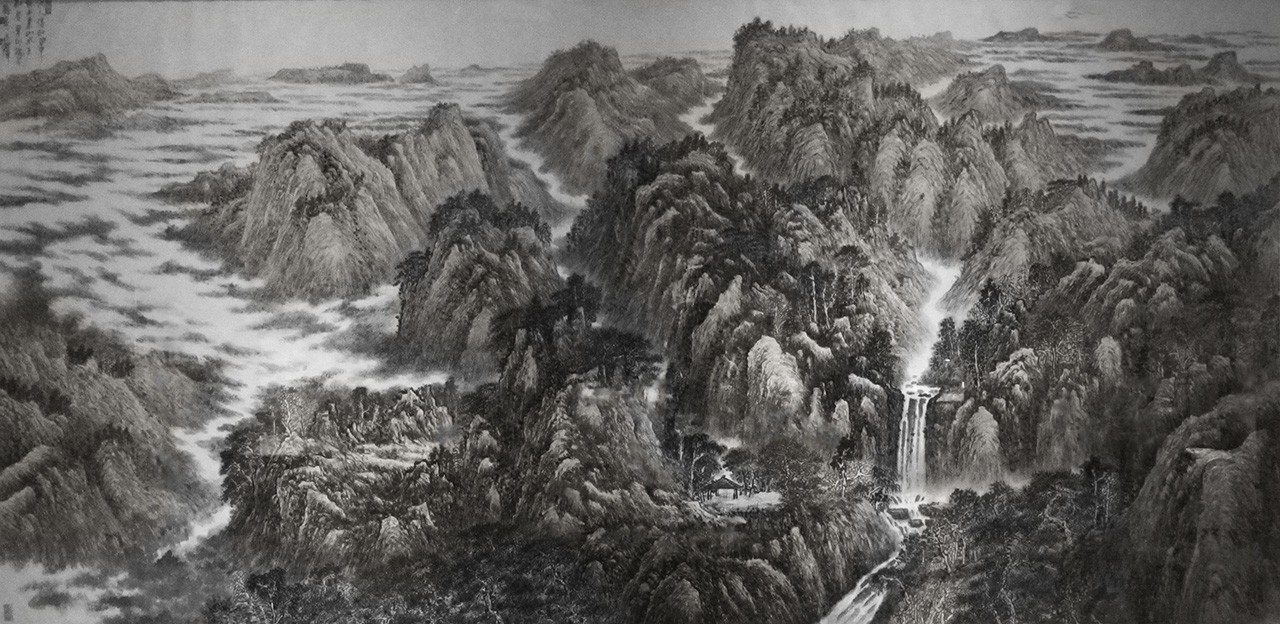 |
Landscape Painting, late 20th to early 21st Century
Cai Liqun (Chinese, 1955- ); China
Wash painting on rice paper; 82 x 159 in.
2011.20.1
Gift of Cai Liqun |
Wisping Poetic
There is no style of painting in which the depiction of the "valley fog" mentioned above is more pervasive than in sprawling traditional Chinese landscape paintings. This is a contemporary work by Cai Liqun, a Chinese artist born in 1955, but the broader style of ink wash in which it is done dates to at least the Song dynasty (960-1279) when it would have been practiced by members of the literati class. With ink wash, different values of usually just black ink are used to create evocative grayscale paintings. It was common to have subjects get lighter as they get further towards the background of a composition. Since these were painted on white or near white paper, this gives the intentional or unintentional effect of distant subjects being swallowed by mist. Landscapes often relied on having mountainous outcroppings with darkened peaks and bases disappearing into the whiteness of their paper. In the painting of Cai Liqun, he uses the color of the paper to punctuate valleys with meandering rivers of fog.
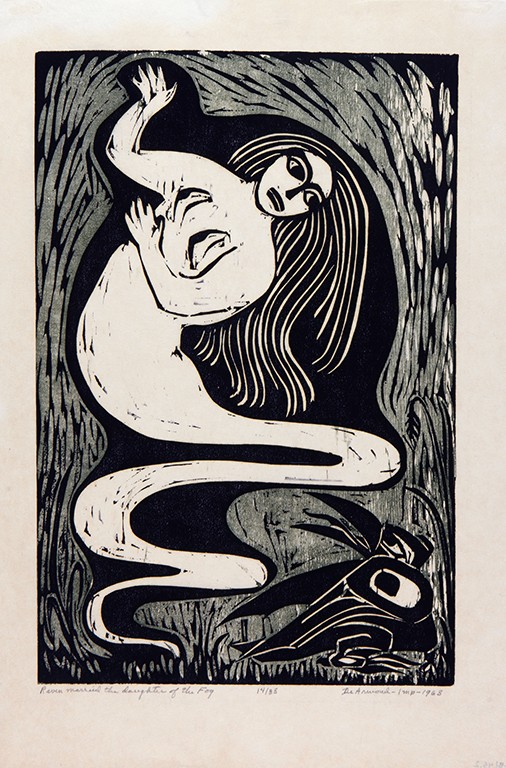 |
Raven Married the Daughter of the Fog, 1963
Dale DeArmond (American, 1914-2006); Juneau, Alaska
Woodcut on rice paper; 20 × 16 in.
81.45.2
Gift of Mrs. Catherine Quick |
Smoke and Mirrored Prints
For animistic cultures who believe in the anthropomorphizing of natural phenomena, fog often takes on a personality of its own. One Tlingit story holds that the daughter of a chief named Fog-Over-The-Salmon was married to Raven on the condition that Raven treat her properly. After some time together Raven forgot the words of his father-in-law and hit his wife. When she ran away, he chased after her, but in reaching for her found that she turned into fog. Despite this woodblock print depicting part of the Tlingit’s oral tradition, it was printed by Dale DeArmond, an illustrator and printmaker who had moved to Alaska from Washington State with her husband. Throughout her career she often worked alongside Indigenous Alaskans in the visual depiction of their oral tradition.
Text and images may be under copyright. Please contact Collection Department for permission to use. References are available on request. Information subject to change upon further research.








Comments